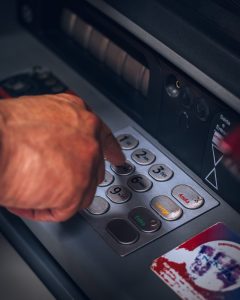Forex wave analysis is a powerful trading strategy that involves identifying and analyzing patterns in price movements using chart patterns and technical indicators. It is based on the principle that financial markets move in waves, and that by identifying and understanding these waves, traders can make informed decisions about when to enter and exit trades.
In this article, we will discuss how to wave analysis forex and some of the key concepts and tools involved in this strategy.
What is Wave Analysis Forex?
Wave analysis forex is a method of technical analysis that uses Elliott wave theory to identify and analyze patterns in price movements of currency pairs. Elliott wave theory is a complex and advanced trading strategy that is based on the principle that markets move in a series of waves.
According to Elliott wave theory, the market moves in patterns of five waves in the direction of the trend, followed by three corrective waves against the trend. These waves are labeled as impulse waves and corrective waves, respectively.
The five waves are labeled as wave 1, wave 2, wave 3, wave 4, and wave 5. Wave 1 and wave 3 are the stronger impulse waves, while wave 2 and wave 4 are corrective waves. Wave 5 is the final wave and often marks the end of the trend.
The three corrective waves are labeled as wave A, wave B, and wave C. Wave A and wave C are impulse waves in the opposite direction of the trend, while wave B is a corrective wave.
How to Perform Wave Analysis Forex?
Performing wave analysis forex involves identifying and analyzing patterns in price movements using Elliott wave theory. The following steps can be followed to perform wave analysis forex:
Step 1: Identify the Trend
The first step in wave analysis forex is to identify the trend. The trend is the general direction of the price movement over a given period of time. The trend can be either bullish or bearish.
To identify the trend, traders can use technical indicators such as moving averages, trend lines, and price action analysis. A bullish trend is characterized by higher highs and higher lows, while a bearish trend is characterized by lower highs and lower lows.
Step 2: Identify the Impulse Waves
Once the trend is identified, traders can start looking for the impulse waves. Impulse waves are the five waves that move in the direction of the trend. These waves are labeled as wave 1, wave 2, wave 3, wave 4, and wave 5.
To identify the impulse waves, traders can use technical indicators such as Fibonacci retracements, trend lines, and price action analysis.
Step 3: Identify the Corrective Waves
After identifying the impulse waves, traders can start looking for the corrective waves. Corrective waves are the three waves that move against the trend. These waves are labeled as wave A, wave B, and wave C.
To identify the corrective waves, traders can use technical indicators such as Fibonacci retracements, trend lines, and price action analysis.
Step 4: Analyze the Waves
Once all the waves are identified, traders can start analyzing the waves to determine the potential future price movements. Traders can use technical indicators such as Elliott wave oscillator and MACD to analyze the waves.
The Elliott wave oscillator is an indicator that measures the difference between the current price and the price of a previous wave. It is used to identify the strength of the trend and the potential reversal points.
The MACD is an indicator that measures the difference between two moving averages. It is used to identify the momentum of the trend and the potential reversal points.
Step 5: Enter and Exit Trades
Based on the analysis of the waves, traders can enter and exit trades. Traders can enter trades when the price is in the direction of the trend and exit trades when the price is against the trend.
Conclusion
Forex wave analysis is a powerful trading strategy that involves identifying and analyzing patterns in price movements using Elliott wave theory. It is a complex and advanced trading strategy that requires a deep understanding of the markets and technical indicators.
By following the steps outlined in this article, traders can perform wave analysis forex and make informed decisions about when to enter and exit trades. However, traders should always keep in mind that forex trading involves risk, and they should never risk more than they can afford to lose.





